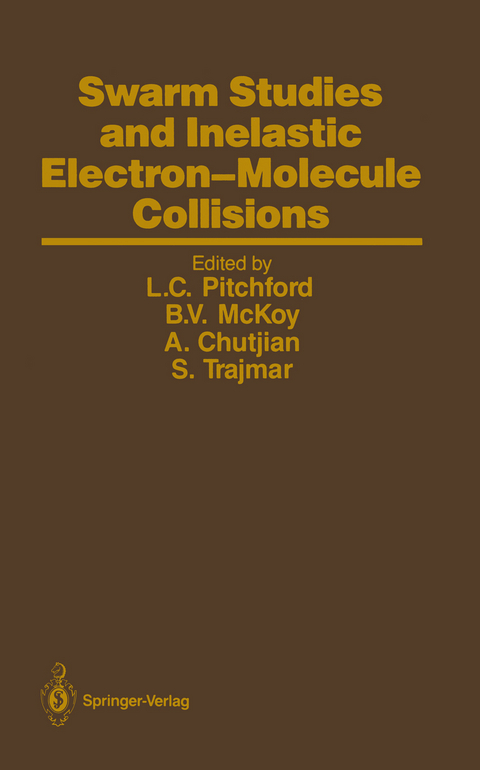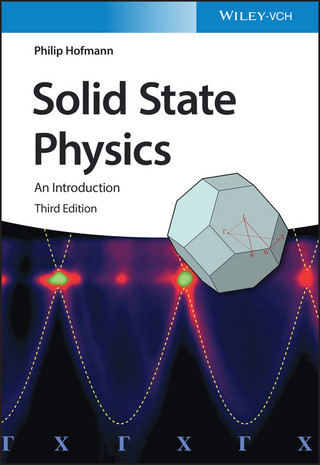
Swarm Studies and Inelastic Electron-Molecule Collisions
Springer-Verlag New York Inc.
978-1-4612-9104-6 (ISBN)
This volume presents the contributions of participants in the Symposium on Swarm Studies and Inelastic Electron-Molecule Collisions, held on July 19-23, 1985, in Tahoe City, California. This was a joint meeting of the Fourth International Swarm Seminar and the Electron-Molecule Collisions Symposium which have been traditionally separate satellite symposia to the International Conference on the Physics of Electronic and Atomic Collisions (ICPEAC). In the early stages of planning for these two satellite symposia to the XIVth ICPEAC, a group of us recognized the significant scientific merit and advantages of having a joint symposium. This idea was particularly appealing due to a large mutual interest in important advances (theoretical, experimental, and modeling) in both fields, and because it provides a forum to bring together a single-collision point of view with a multiple-collision one. For example, studies of multiple-term solutions to Boltzmann's equation and their application to swarm systems are intrinsically coupled to the availability of both integral and differential cross-sections for electron-molecule collisions. In tum, experimental and theoretical studies of these electron-molecule scattering cross-sections are becoming quite sophisticated, accurate, and comprehensive. Furthermore, in swarm studies, computational and experimental methods have advanced to the point where detailed and meaningful comparison with, and use of, single-collision beam data is now possible. More over, recent experimental advances in the study of single-collision electron at tachment phenomena have provided a significant overlap with swarm data and extension to subthermal energies.
I. Selected Reviews in Swarm Studies.- A Comparative Study of the Computing Methods Actually in Use for Accurate Determination of Swarm Parameters.- Recent Advances in High-Pressure Swarms.- Electron—Ion Recombination in High-Pressure Gases.- II. Kinetic Theory.- Principles of the Measurement of Electron Drift Velocities.- Effect of Boundaries and Field Inhomogeneities on Swarms.- III. Abstracts of Contributed Swarm Papers.- Program of the JILA Atomic Collisions Cross-Section Data Center.- Collisionally Induced Dissociation of Ions in a Strong Drift Field and its use as an Analysis Tool.- Retarding Potential Difference Analysis of Ion Swarm Velocity Distributions: A Computer Simulation Study.- Transverse Diffusion of Lithium Ions in Helium.- Electron Attachment to F2.- Thermal Electron Attachment to van der Waals Molecules (O2.N2).- Time-Resolved Measurements of Thermalization Processes of Subexcitation Electrons in Rare Gases.- Electron Swarm Study in Nitrogen—Rare-Gas Mixtures and Vibrational Excitation in Nitrogen.- Excited-State Quenching Phenomena in Weakly Ionized Nitrogen.- Electron Drift Velocity and Attachment and Ionization Coefficients in CH4, CF4, C2F6, C3F8 and n-C4F10.- Comparison of Calculated and Experimental Thermal Attachment Rate Constants for SF6 in the Temperature Range 200-600K.- Measurements of Electron and Ion Transport Data in SF6 and SF6/N2 Mixtures.- Common Parameterizations of Swarm and Breakdown Data for Binary Electronegative—Nonelectronegative Gas Mixtures.- Boltzmann Equation Analysis of the Synergism of Uniform Field Breakdown Voltage for SF6 -CCL2F2 and SF6 -SO2 Mixtures.- Effect of Gas Impurity for the Electron Drift Velocities in Inert Gases by Boltzmann Equation Analysis.- Spatial Variations in the Energy Distribution Function for Steady State Townsend Discharges.- Excitation and Ionization Rates in Hydrogen at Very High E/n.- Evolution Equation and Transport Coefficients of Swarms in Short Time Development of Initial Relaxation Processes.- Transient Hot Electron Mobility in Ethene and Cyclopropane.- Nonequilibrium Behavior of Electrons in Strong Electric Fields.- Steady-State, Spatially Dependent Electron Transport and Rate Coefficients.- Transport Coefficients of Electron Swarms in Gases in the Presence of Nonconservative Collisions.- Convenient Expressions of Diffusion Coefficients for Free Electrons in Gases in Presence of Ramsauer Effects.- The Approach to Equilibrium of Electron Swarms in Non-Planar Geometries.- Magnetic Control of Low Pressure Diffuse Discharges.- IV. Relations between Single and Multicollision Phenomena.- Relations between Electron-Molecule Scattering and Swarm Experiments and Analysis.- Experimental and Theoretical Investigation of Near-Threshold e-H2 Collisions.- Electron Collision Cross-Sections for Molecules Determined from Beam and Swarm Data.- V. Studies of Single-Collision Phenomena.- Low-Energy, High-Resolution Electron-Molecule Collision Studies.- Threshold Phenomena in Electron-Molecule Collisions.- Rotational and Vibrational Excitation of Molecules by Low-Energy Electrons.- Studies of Elastic and Electronically Inelastic Electron-Molecule Collisions.- Inelastic Electron Molecule Scattering Using the R-Matrix Method.- VI. Single and Multicollision Phenomena: Dissociation, Internally Excited Targets and Clusters.- Fragmentation Dynamics and Energy Partitioning in Dissociative Attachment on Triatomic Molecules.- Effects of Temperature on Dissociative and Nondissociative Electron Attachment.- Electron Impact Ionization Cross-Sections for Atoms, Radicals, and Metastables.- Total Dissociation Cross-Sections of Fluoroalkanes for Electron Impact: Their Usefulness for Understanding Plasma-Assisted Etching Environments.- Electron—Cluster Interactions.- VII. Microscopic Models: Data Needs and Outlook.- Discharge Modeling.- Boltzmann Equation in Vibrationally and Electronically Excited Molecular Plasmas.- Applications of Cross-Sections for Electron-Molecule Collision Processes.- Current Applications and Opportunities in Swarm Studies.
| Zusatzinfo | XIV, 424 p. |
|---|---|
| Verlagsort | New York, NY |
| Sprache | englisch |
| Maße | 155 x 235 mm |
| Gewicht | 663 g |
| Themenwelt | Naturwissenschaften ► Physik / Astronomie ► Atom- / Kern- / Molekularphysik |
| Technik ► Elektrotechnik / Energietechnik | |
| ISBN-10 | 1-4612-9104-6 / 1461291046 |
| ISBN-13 | 978-1-4612-9104-6 / 9781461291046 |
| Zustand | Neuware |
| Haben Sie eine Frage zum Produkt? |
aus dem Bereich


